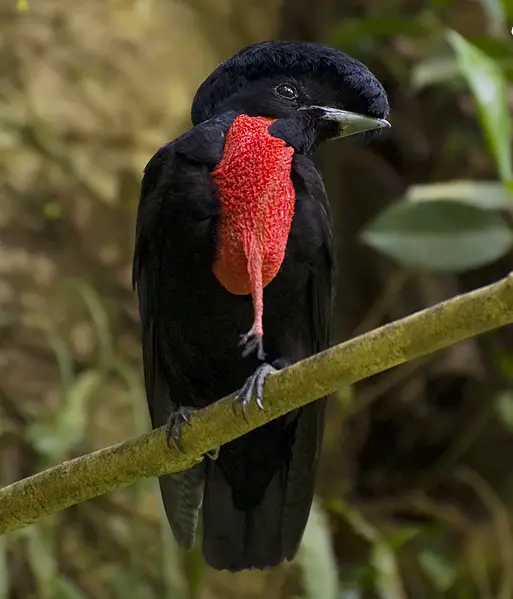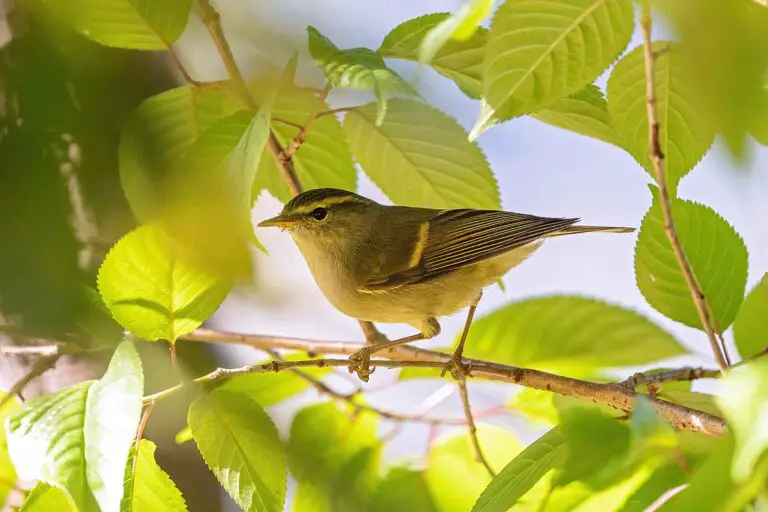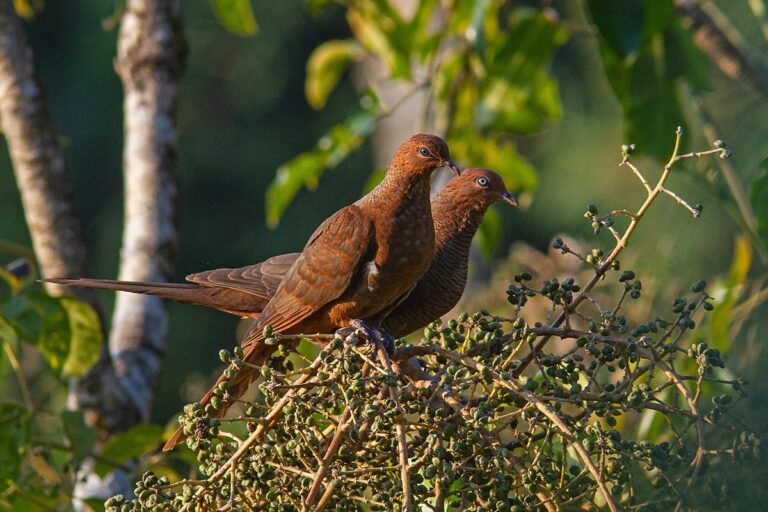Ivory-billed woodpecker (Campephilus principalis)
“The ivory-billed woodpecker can drill into wood with its sharp beak”
Scientific Classification
- Kingdom: Animalia
- Phylum: Chordata
- Class: Aves
- Order: Piciformes
- Family: Picidae
- Genus: Campephilus
- Scientific Name: Campephilus principalis
To explore more about animal classification, check out our Complete Guide.
Ivory-billed Woodpecker Conservation Status: Critically Endangered
Ivory-billed Woodpecker Locations: Central America, North America
Ivory-billed Woodpecker Facts:
- Prey: Berries, nuts, seeds, and insects.
- Fun Fact: The ivory-billed woodpecker possesses the remarkable ability to drill into wood using its sharp beak.
- Estimated Population Size: Unknown.
- Biggest Threat: Deforestation.
- Most Distinctive Feature: The ivory-colored bill.
- Wingspan: 31 inches.
- Incubation Period: 2 weeks.
- Habitat: Forests and swamps.
- Predators: Raccoons, snakes, owls, crows, and hawks.
- Diet: Omnivorous.
- Type: Bird.
- Common Name: Ivory-Billed Woodpecker.
- Number Of Species: 1.
- Location: United States and Cuba.
- Nesting Location: Hollowed trees.
- Age of Molting: 5 weeks.
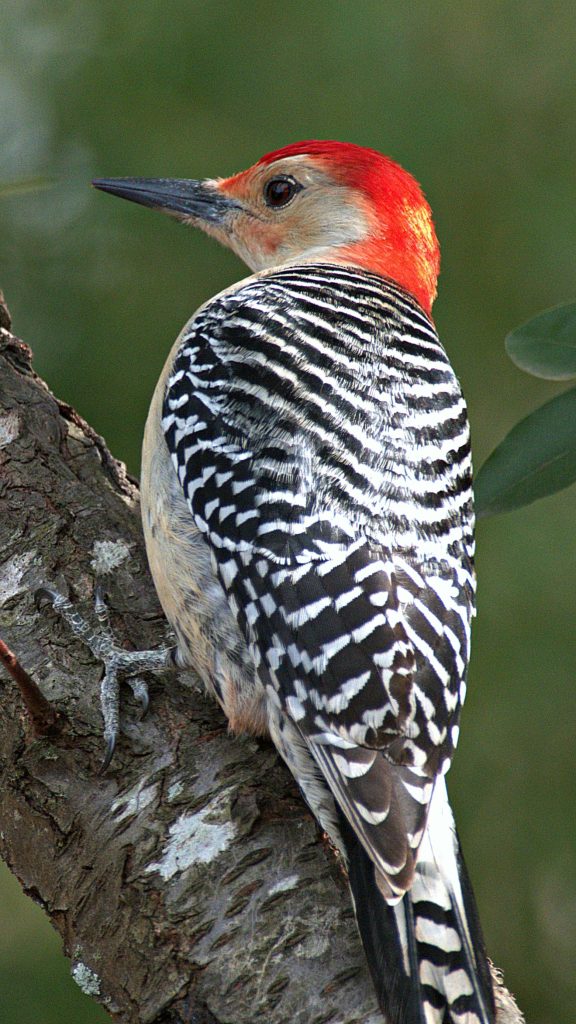
Ivory-billed Woodpecker Physical Characteristics:
- Color: Red, black, and white.
- Skin Type: Feathers.
- Lifespan: Around 20 years.
- Weight: 450-570 grams.
- Length: 19-21 inches.
The ivory-billed woodpecker, once a symbol of the lush forests and swamps of the southern United States, is now shrouded in uncertainty, with its existence hanging in the balance. With no confirmed sightings since 1987, this iconic species is feared to be extinct. Nonetheless, its elusive nature has spurred countless individuals to venture into the depths of forests and swamps, hopeful for a glimpse or sign of its presence.
In its prime, the ivory-billed woodpecker played a vital role as a top ecosystem engineer. With its long and sharp beak, it sculpted intricate cavities in trees, not only creating homes for itself but also providing shelter for numerous other species. The loss of such a keystone species has undoubtedly left a void in the delicate balance of these ecosystems, underscoring the importance of conservation efforts to protect and preserve biodiversity for future generations.
3 Ivory-Billed Woodpecker Mesmerizing Facts
- Distinctive Sounds: Woodpeckers are known for their unique sounds as they chisel into trees. Experts can even differentiate between species based on the distinct noises they create while burrowing into wood, adding to the richness of the forest symphony.
- Protective Adaptations: The Ivory-Billed Woodpecker has tufts of white feathers around its nostrils, serving as a natural barrier to keep out debris while drilling into wood. This adaptation helps protect its delicate respiratory system from potential harm during the drilling process.
- Sedentary Lifestyle: While the Ivory-Billed Woodpecker is generally considered a sedentary species, rarely straying far from its home territory, there are indications that it may exhibit some degree of movement. Some experts speculate that these birds may occasionally relocate to take advantage of newly available resources, such as freshly fallen trees, highlighting their adaptability and resourcefulness in their environment.
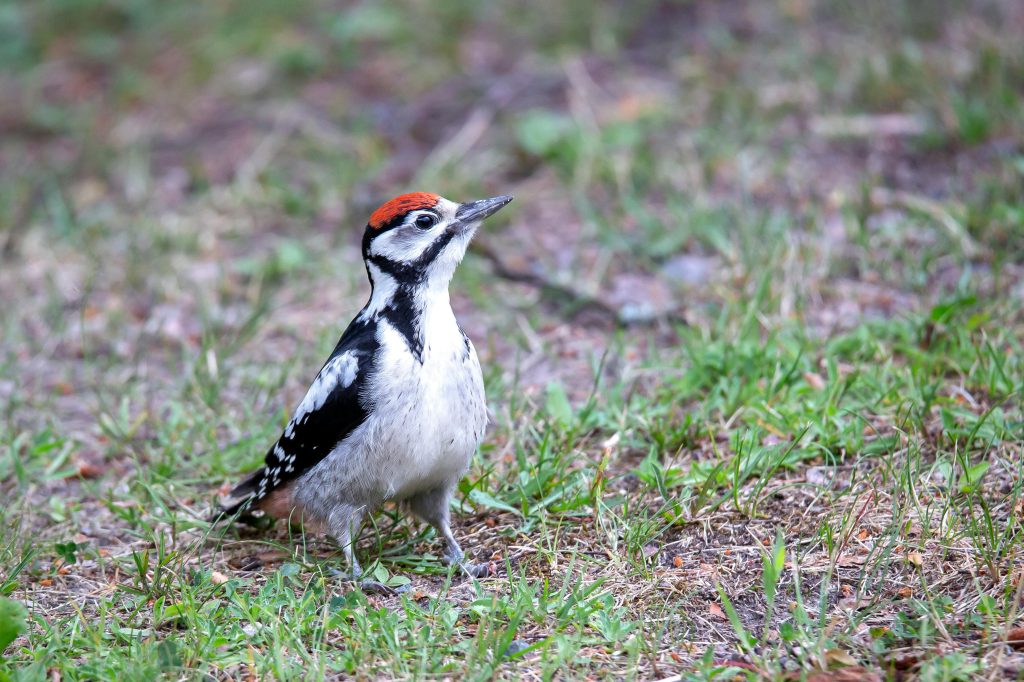
Where to Find the Ivory-Billed Woodpecker
The Ivory-Billed Woodpecker, once widespread across much of the southeastern United States and Cuba, thrives in expansive forests rich with a steady abundance of dead or decaying trees. These habitats provide vital sustenance and shelter for the woodpecker, essential for its survival.
The preferred habitat of the Ivory-Billed Woodpecker typically consists of extensive forests where there is a continuous supply of dead or dying trees. These trees are often the result of natural phenomena such as fires, floods, or hurricanes, which create the ideal conditions for the woodpecker’s foraging and nesting activities.
For the Ivory-Billed Woodpecker, these trees serve a dual purpose: they provide a readily available source of food, as the woodpecker drills into the decaying wood in search of insects and larvae, while also offering suitable sites for nesting and roosting. Thus, the health and abundance of these forests are crucial for the continued survival of this iconic species.
Ivory-Billed Woodpecker Nests
The Ivory-Billed Woodpecker employs its sharp beak to meticulously excavate tree cavities, fashioning them into cozy nests for breeding and raising young. It is believed that these woodpeckers create fresh nests annually, just in time for the arrival of the mating season, ensuring optimal conditions for nesting success.
Various tree species are considered suitable nesting sites for the Ivory-Billed Woodpecker. Pines, red maples, bald cypresses, and sugarberries are among the preferred tree species for these majestic birds. These trees offer sturdy and spacious cavities that provide ample protection and security for the woodpecker’s eggs and nestlings. By carefully selecting suitable nesting sites and investing time and effort into nest construction, the Ivory-Billed Woodpecker demonstrates its resourcefulness and commitment to ensuring the survival of its offspring.
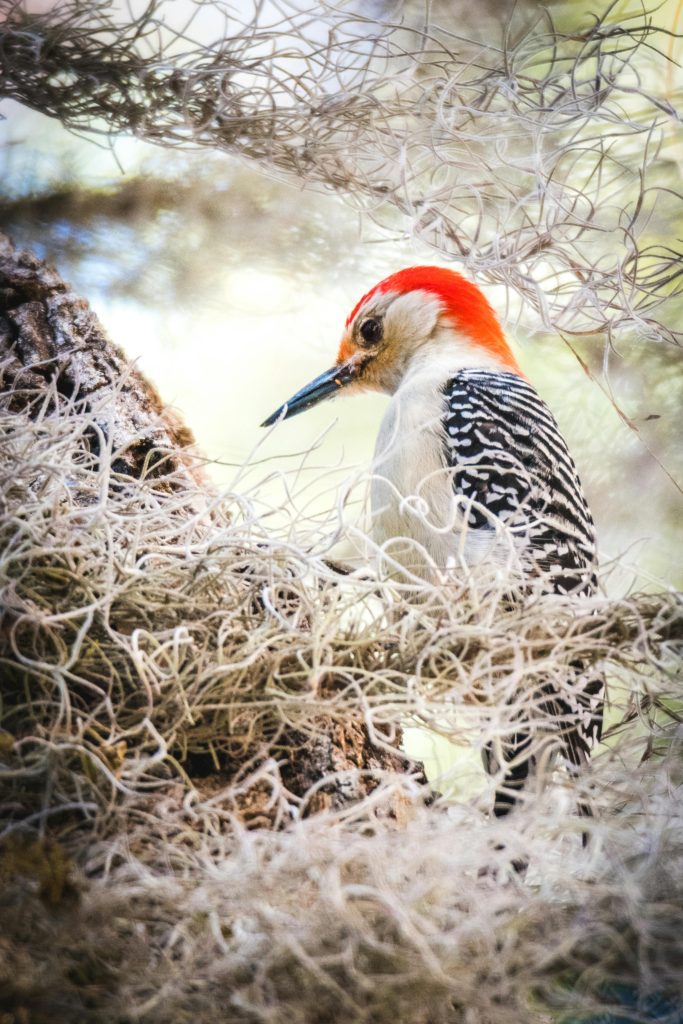
Ivory-Billed Woodpecker Scientific Name
The scientific name of the Ivory-Billed Woodpecker is Campephilus principalis. The genus name, Campephilus, is derived from the combination of two Greek words, “kampe,” meaning caterpillar, and “philos,” meaning loving. This name reflects the woodpecker’s affinity for caterpillars, a staple food source in its diet.
The species epithet, principalis, is a Latin word meaning original or first in importance. This may allude to the remarkable size and significance of this species within its ecosystem.
There are two recognized subspecies of the Ivory-Billed Woodpecker: the American Ivory-Billed Woodpecker and the Cuban Ivory-Billed Woodpecker. These subspecies inhabit distinct regions and exhibit subtle variations in their physical characteristics and behaviors.
Ivory-Billed Woodpecker Size, Appearance, and Behavior
The Ivory-Billed Woodpecker is distinguished by several distinctive features, including its long ivory-colored bill, curved black claws, and prominent crest at the back of the head. Adorned in glossy black plumage with striking white stripes running from the wings to the sides of the head, this magnificent bird presents a striking sight. Notably, the innermost wing feathers are also white, adding to its striking appearance, especially when the wings are folded against its back.
Measuring between 19 and 21 inches in length, the Ivory-Billed Woodpecker holds the title of the largest woodpecker species in the entire United States. While males typically exhibit slightly larger dimensions than females, both sexes possess the captivating red crest atop their heads, adding a splash of color to their striking appearance.
The Ivory-Billed Woodpecker’s entire existence revolves around forest ecosystems. From foraging for food to roosting and mating, all aspects of its life take place in and around trees. Although mated pairs likely maintain separate home ranges, they are not aggressively territorial, displaying little aggression toward members of the same species. While not inherently social, Ivory-Billed Woodpeckers have been observed gathering in small groups of three or four individuals.
Their daily routine revolves around foraging for food, with peak activity occurring in the morning hours as they emerge from their nests to preen and call for mates. Activity levels taper slightly during midday before picking up again toward evening. As night falls, they retreat to separate cavities for roosting. Although not known for migration, Ivory-Billed Woodpeckers typically roam within a few miles of their home nests, demonstrating a sedentary lifestyle deeply intertwined with their forest habitats.
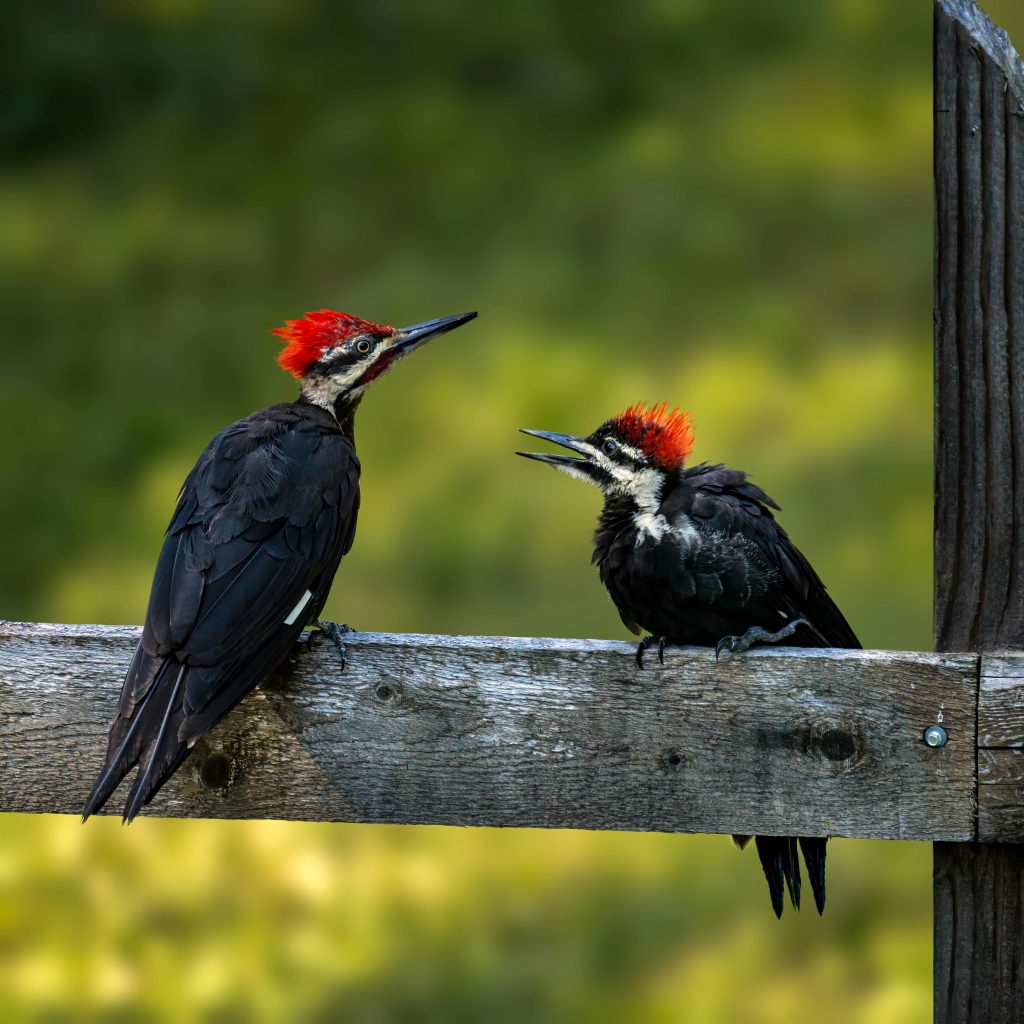
Diet
The Ivory-Billed Woodpecker is an omnivorous species, meaning it consumes a diverse diet consisting of both plant and animal matter. Its foraging activities primarily occur on tree trunks, fallen logs, and occasionally on the ground. This versatile feeding behavior allows the woodpecker to exploit a wide range of food sources within its forest habitat. From probing for insects and larvae hidden beneath the bark of trees to scavenging for fruits, nuts, and seeds, the Ivory-Billed Woodpecker employs a variety of feeding strategies to meet its nutritional needs. By foraging across different substrates and habitats, this adaptable bird ensures a reliable food supply throughout its range.
What does the ivory-billed woodpecker eat?
The Ivory-Billed Woodpecker boasts a varied diet consisting of berries, nuts, seeds, termites, beetles, and other insects. Among its preferred delicacies are beetle larvae, which the woodpecker expertly locates by stripping away the bark of dead or dying trees. This specialized foraging technique allows the woodpecker to uncover hidden insect larvae nestled within the wood, providing a rich source of protein and nutrients. By exploiting a diverse array of food resources, including both plant and animal matter, the Ivory-Billed Woodpecker demonstrates its adaptability and resourcefulness in securing sustenance within its forest habitat.
Predators, Threats, and Conservation Status
Despite the absence of confirmed sightings in recent years, the Ivory-Billed Woodpecker remains listed as a critically endangered species by the IUCN Red List. The designation reflects the grave concern for the species’ survival, given its precarious status and the ongoing threats it faces.
The Ivory-Billed Woodpecker’s dependence on dense forest cover renders it highly vulnerable to habitat loss and degradation, particularly due to deforestation. The destruction of its forest habitat has had a catastrophic impact on the woodpecker’s population numbers, leading to a significant decline in its numbers and contributing to its endangered status.
Efforts to conserve and protect remaining forest habitats are crucial for the survival of the Ivory-Billed Woodpecker and other species dependent on these ecosystems. By addressing the root causes of habitat destruction and implementing measures to restore and preserve forest habitats, we can strive to safeguard the future of this iconic species and ensure its continued presence in our natural world.
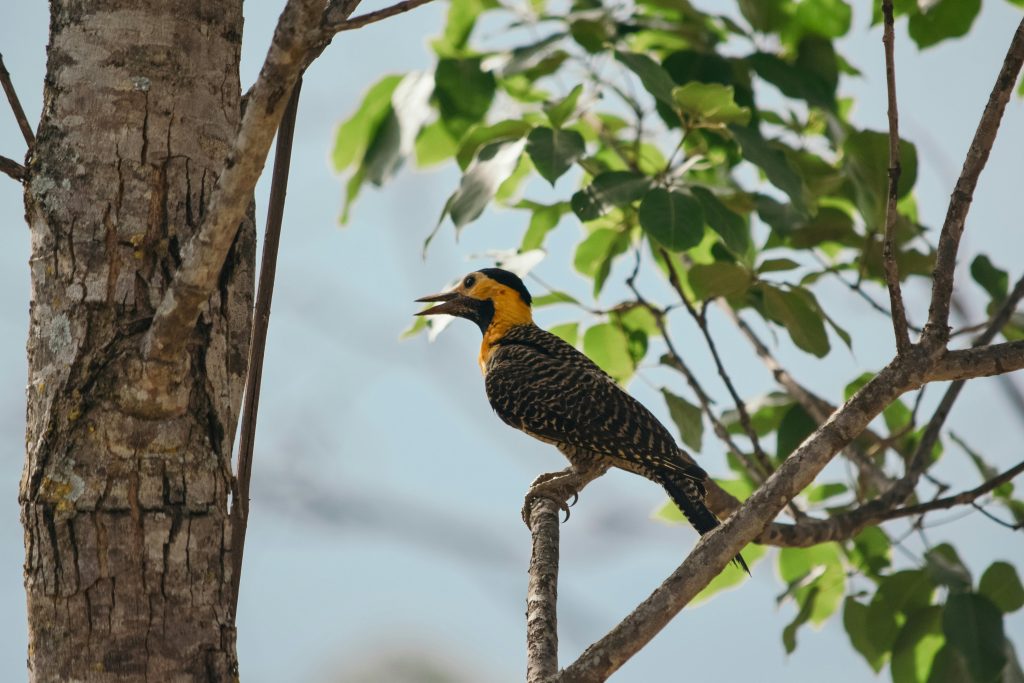
What eats the ivory-billed woodpecker?
While there are scant documented records of the Ivory-Billed Woodpecker being preyed upon by other animals, it is likely that it faced predation from various predators based on our understanding of closely related woodpecker species. Common predators may have included raccoons, snakes, owls, crows, and hawks. Typically, these predators would target eggs and juveniles, exploiting the vulnerability of young woodpeckers. However, given the size and power of some large birds of prey, it is conceivable that they could have posed a threat to fully-grown Ivory-Billed Woodpeckers as well. Despite the limited evidence, predation likely played a role in shaping the population dynamics of this enigmatic species.
Reproduction, Young, and Molting
Due to the scarcity of information about the Ivory-Billed Woodpecker’s reproductive habits, our understanding of its breeding behavior is limited. However, based on the available data, it is presumed that this species initiates nest building as early as January, with egg-laying occurring in February or later. A typical clutch size may consist of up to six eggs.
Once laid, the eggs are incubated by both parents for a period of approximately two weeks. After hatching, the chicks require around five weeks to develop their full complement of flight feathers. Throughout this period, the parents provide dedicated care and nurturing to ensure the chicks’ well-being and development.
The bond between parent and offspring can extend beyond the fledging stage, with parental care continuing for more than a year. Even after the young woodpecker has learned to forage independently, it may maintain a relationship with its parents.
The lifespan of the Ivory-Billed Woodpecker remains uncertain, but some estimates suggest it could live up to 20 years or more. However, further research is needed to elucidate the reproductive biology and longevity of this fascinating species.
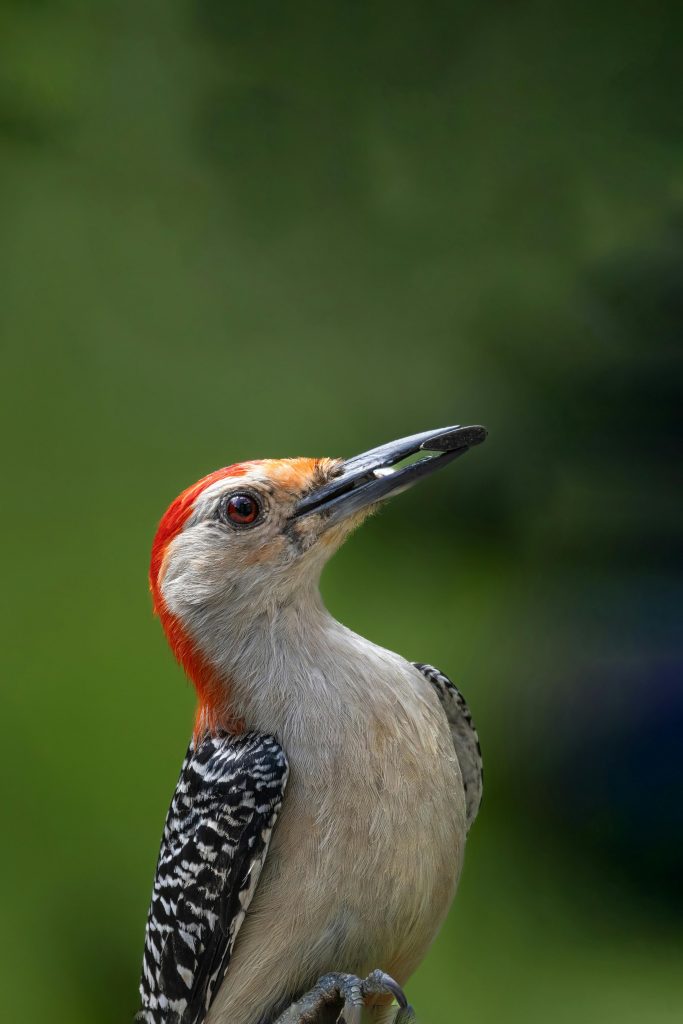
Ivory-Billed Woodpecker Population
The current population size of the Ivory-Billed Woodpecker in the wild remains a mystery, shrouded in uncertainty and speculation. Following decades of decline during the 19th and early 20th centuries, the species was tragically considered functionally extinct, with no confirmed sightings recorded in the wild or in captivity.
However, a glimmer of hope persists that the Ivory-Billed Woodpecker may yet be rediscovered in the dense forested swamps of Cuba, Louisiana, Arkansas, or Florida. Despite the lack of concrete evidence, unconfirmed sightings and anecdotal reports have fueled optimism among conservationists and bird enthusiasts alike.
In light of these potential sightings, the species’ status was elevated to critically endangered, highlighting the urgent need for conservation efforts to protect any remaining populations and their habitats. While the search for the Ivory-Billed Woodpecker continues, the possibility of its rediscovery serves as a beacon of hope for the conservation of this iconic and enigmatic species.
At The End…
The Ivory-Billed Woodpecker stands as a symbol of resilience and mystery in the world of conservation. Despite decades of decline and the challenges of habitat loss and degradation, hope persists for the rediscovery of this iconic species in the dense forests of its historic range. While the true status of the Ivory-Billed Woodpecker remains uncertain, its elevated designation as critically endangered underscores the importance of ongoing conservation efforts to protect and preserve its remaining habitats. As the search for this elusive bird continues, it serves as a poignant reminder of the fragility of our natural world and the imperative to safeguard its biodiversity for generations to come.
Reference:
